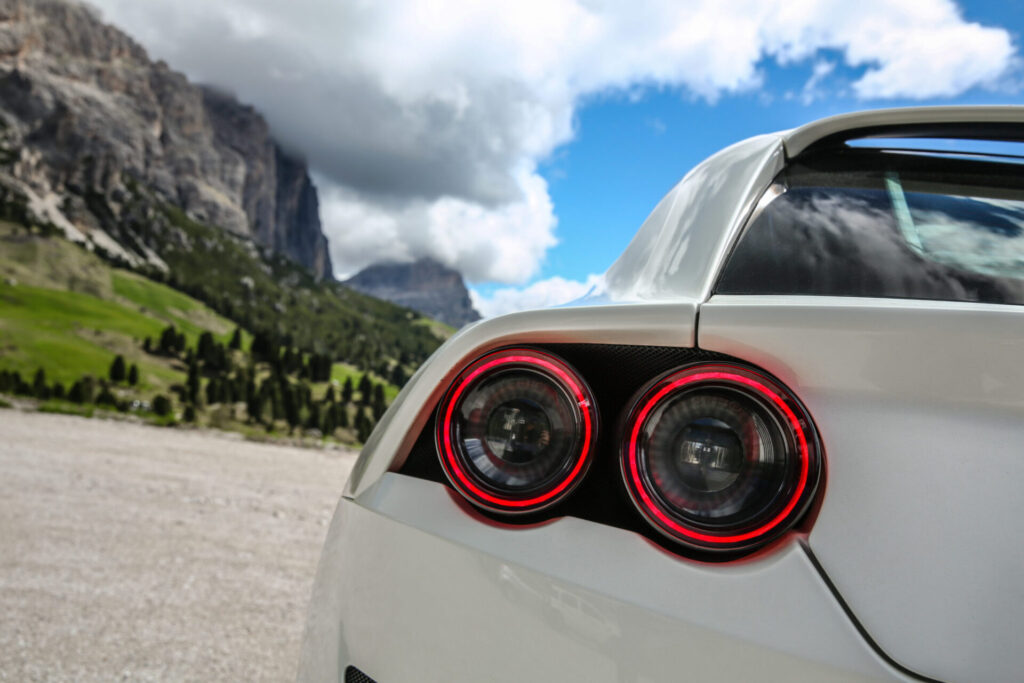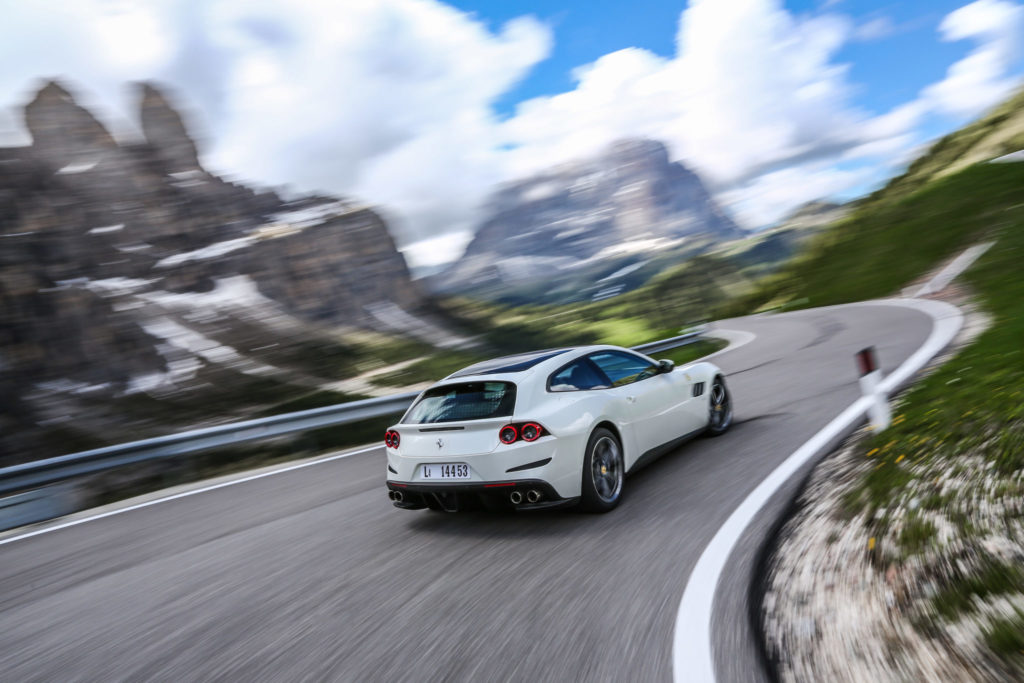It takes great craftsmanship to create a supercar that impresses with its performance and uncompromising handling on the track. Designing a car that combines enormous power, practicality and luxury takes even more know-how and experience. The Ferrari GTC4Lusso shows the way to do it.
Performance is one thing, but who says super sports cars can’t be practical? Who says the joy of driving has to be limited to just two people at a time? The Ferrari FF, GTC4Lusso’s predecessor, combined a comfortable 4-seater interior with a powerful V12 engine. The new model offers even more.
Don’t let appearances fool you. This is no mere facelift of the Ferrari FF. Improved in every aspect, the GTC4Lusso sets the bar even higher. The new bodywork was created by Ferrari’s in-house design studio — Ferrari Design. The team, led by Flavio Manzoni, used the FF design by Pininfarina as a starting point. However, the GTC4Lusso has a more dynamic and aggressive appearance. The lowered roofline at the rear and the ribbing on the doors make the silhouette look slimmer, even though the car’s dimensions have not changed significantly. The designers spent countless hours in the wind tunnel to make sure that the bodywork would not only be beautiful, but also functional. The large front grille ensures sufficient airflow to cool the engine. The ribs on the mudguards are not just decorative features reminiscent of the classic Ferrari 330 GTC; their purpose is also to dissipate heat from the engine compartment. The rear diffuser, discreetly integrated into the boot lid along with the spoiler, guarantees improved rear axle downforce. The whole is complemented with four lamps, which hearken back to classic Ferraris.

The car’s interior has seen a true revolution. The driver sits behind a redesigned steering wheel, which is now smaller than on other models. This has been made possible by the use of a more compact airbag. An interesting feature is the ability to activate the turn signals from behind the steering wheel, via extended buttons that reach behind its rim. The driver’s and passenger’s areas are separated by a pronounced central tunnel console.






Its focal point is a large 10.25-inch touchscreen, which is the heart of the multimedia system and enables control over the air conditioning. It, too, has been redesigned for better performance and quieter operation. The 8.8-inch display in front of the passenger seat has received new functions. Not only can you use it to read data from the onboard computer, but it also allows you to set navigation destinations and control the radio. Also available on the GTC4Lusso is Apple CarPlay for easy smartphone control. A large panoramic roof made of a special type of glass extends over the passengers’ heads. It acts as an insulator, reflecting sunlight when the temperature outside is high and retaining heat inside on colder days.

The Ferrari FF was the most powerful four-seater ever to leave the gates of the Maranello factory. GTC4Lusso goes one step further. The output of the 12-cylinder engine has increased by 30 hp, for a total of 690 hp. Contrary to the trend of downsizing, Ferrari has stayed with the traditional naturally aspirated engine without the support of turbochargers. This allows the GTC4Lusso to produce that same trademark sound that has distinguished Maranello cars for more than 70 years. Codenamed Tipo F140, the engine originated from the 2002 Ferrari Enzo, where it was capable of generating 660 hp. On the GTC4Lusso, the maximum torque is 697 Nm and is only revealed at 5750 RPM. However, up to 80 per cent of this power is available at just 1750 RPM, allowing the engine to show its potential even during city driving. The Ferrari FF was the brand’s first series car to feature four-wheel drive. The 4RM system is unlike any other solution available on the market. The power is transmitted to the rear axle via a 7-speed dual-clutch transmission. In front of the engine, there is a small gearbox called the Power Transfer Unit (PTU) responsible for transmitting power to the front wheels. Under the watchful eye of electronic systems, a set of slipper clutches distributes power to the individual wheels as required. The whole system weighs only half as much as a traditional one. The GTC4Lusso uses an improved 4RM-S system, integrated with Side Slip Control 4.0 (SSC4), an SCM-E suspension (MagneRide system, for which parts are manufactured in Poland) and a torsion beam rear axle. The improved system works faster and more precisely, making it much easier and safer to get out of challenging situations. If necessary, the 4RM-S system can divert up to 90 per cent of power to one of the front wheels to optimise trajectory. The redesigned steering is now even more responsive and has a smaller ratio. A flick of the wrists is all that is needed to correct the driving trajectory. The torsion wheel arrangement, known from the Ferrari F12tdf, gives the impression of a shorter wheelbase and greater manoeuvrability.

According to statistics, Ferrari FF owners do the highest mileage of the brand’s customers. This is undoubtedly due to the practical and comfortable body, which makes the FF suitable for everyday driving. However, the advanced electronics that manage the transmission of propulsion power have also contributed to this in a significant way. Thanks to this, drivers do not feel intimidated by the car’s power and know that, if necessary, they can rely on electronic systems to effectively get them out of trouble. One such system is Side Slip Control, borrowed from the 458 Speciale. It controls the degree of rear axle camber and, depending on the situation, allows the car to exit a corner more quickly without losing grip or to keep the car in a controlled slip. On the GTC4Lusso, the SSC system works in tandem with the torsion beam rear axle and the electronic differential to maintain the correct cornering path on any surface.
